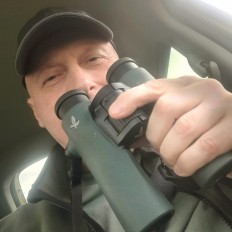Top species
- Garganey (Spatula querquedula)
- Ferruginous Duck (Aythya nyroca)
- Whiskered Tern (Chlidonias hybrida)
- Black Stork (Ciconia nigra)
- Pygmy Cormorant (Microcarbo pygmaeus)
- Little Bittern (Ixobrychus minutus)
- Black-crowned Night Heron (Nycticorax nycticorax)
- Squacco Heron (Ardeola ralloides)
- White-tailed Eagle (Haliaeetus albicilla)
- European Bee-eater (Merops apiaster)
- Eurasian Hobby (Falco subbuteo)
- Red-backed Shrike (Lanius collurio)
- Lesser Gray Shrike (Lanius minor)
- Eurasian Penduline-Tit (Remiz pendulinus)
List up to ca. 25 species that:
• have a limited distribution range and/or are rare on a global level
• are most sought-after by birdwatchers at this site
• and are relatively easy to see at this site (year-round or seasonally)
| Garganey (Spatula querquedula) | |
| Ferruginous Duck (Aythya nyroca) | |
| Whiskered Tern (Chlidonias hybrida) | |
| Black Stork (Ciconia nigra) | |
| Pygmy Cormorant (Microcarbo pygmaeus) | |
| Little Bittern (Ixobrychus minutus) | |
| Black-crowned Night Heron (Nycticorax nycticorax) | |
| Squacco Heron (Ardeola ralloides) | |
| White-tailed Eagle (Haliaeetus albicilla) | |
| European Bee-eater (Merops apiaster) | |
| Eurasian Hobby (Falco subbuteo) | |
| Red-backed Shrike (Lanius collurio) | |
| Lesser Gray Shrike (Lanius minor) | |
| Eurasian Penduline-Tit (Remiz pendulinus) |
Black Stork (Ciconia nigra) was added by Dragan Simic (2023-05-10 16:48:45)
Pygmy Cormorant (Microcarbo pygmaeus) was added by Dragan Simic (2023-05-10 16:48:31)
European Bee-eater (Merops apiaster) was added by Dragan Simic (2023-05-10 16:31:27)
Eurasian Penduline-Tit (Remiz pendulinus) was added by Dragan Simic (2023-05-10 16:31:04)
Lesser Gray Shrike (Lanius minor) was added by Dragan Simic (2023-05-10 16:30:48)
Red-backed Shrike (Lanius collurio) was added by Dragan Simic (2023-05-10 16:30:32)
Eurasian Hobby (Falco subbuteo) was added by Dragan Simic (2023-05-10 16:30:14)
Whiskered Tern (Chlidonias hybrida) was added by Dragan Simic (2023-05-10 16:30:00)
White-tailed Eagle (Haliaeetus albicilla) was added by Dragan Simic (2023-05-10 16:29:46)
Black-crowned Night Heron (Nycticorax nycticorax) was added by Dragan Simic (2023-05-10 16:29:31)
Squacco Heron (Ardeola ralloides) was added by Dragan Simic (2023-05-10 16:29:13)
Little Bittern (Ixobrychus minutus) was added by Dragan Simic (2023-05-10 16:28:58)
Ferruginous Duck (Aythya nyroca) was added by Dragan Simic (2023-05-10 16:28:39)
Garganey (Spatula querquedula) was added by Dragan Simic (2023-05-10 16:28:22)


